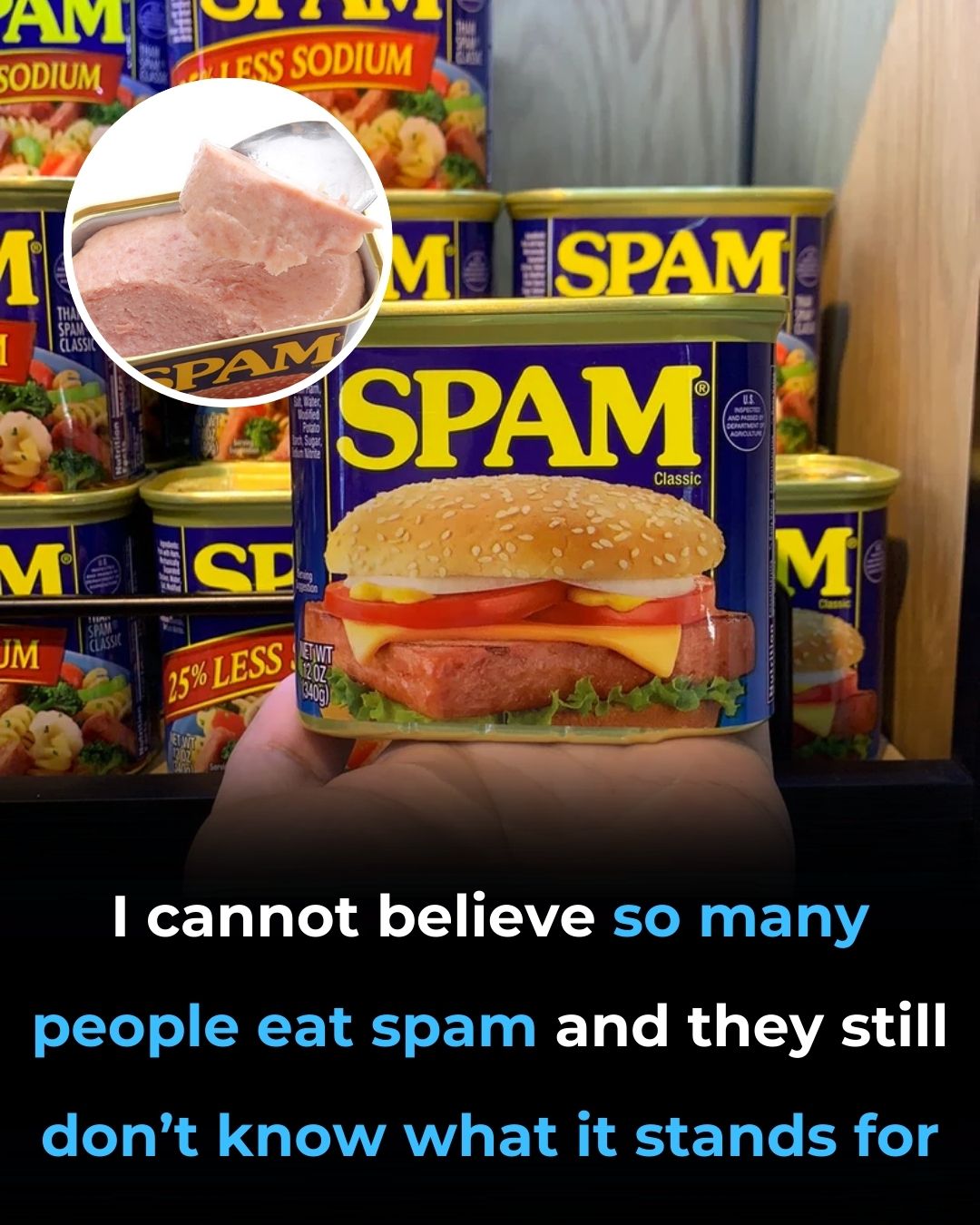A preservative that maintains color (keeping the meat pink) and prevents bacterial growth, especially Clostridium botulinum . It’s commonly used in cured meats like bacon and hot dogs.
📌 No fillers like soy or artificial ingredients — just six simple components.
How Is SPAM Made?
The production process is a mix of old-school preservation and modern food science:
Grinding & Mixing
Pork and ham are ground and blended with salt, water, potato starch, sugar, and sodium nitrite.
Cooking
The mixture is cooked in large vats to ensure it’s fully cooked and safe to eat.
Canning
The cooked meat is poured into cans and sealed airtight.
Retorting (Heat Sterilization)
Cans are heated under high pressure to sterilize the contents, killing bacteria and allowing SPAM to last for years without refrigeration.
Cooling & Labeling
Once cooled, the cans are labeled and shipped worldwide.
The result? A shelf-stable, ready-to-eat meat product that can survive pantries, bunkers, and even space missions (yes, SPAM has been to space!).
Why Is SPAM So Popular?
From military rations to gourmet musubi, SPAM’s appeal spans continents and generations. Here’s why it’s beloved around the world:
1. Affordable & Convenient
No refrigeration needed until opened
Ready to eat straight from the can
Budget-friendly protein source
2. Incredibly Versatile
SPAM can be:
Pan-fried (the most popular method — crispy edges!)
Grilled or baked
Sliced into sandwiches
Diced into fried rice, noodles, stews, or omelets
3. Global Flavor Icon
SPAM has been embraced in unique and delicious ways:
Hawaii: SPAM musubi — grilled SPAM on rice, wrapped in seaweed — is a staple.
South Korea: SPAM is a luxury gift and used in budae jjigae (army stew) and kimchi fried rice.
Philippines: Eaten with garlic rice and eggs for breakfast, or in spaghetti.
Japan: SPAM is used in sandwiches, bento boxes, and even pizza.
4. Nostalgia & Comfort
For many, SPAM evokes memories of family meals, wartime resilience, or childhood lunches. It’s more than food — it’s emotional sustenance .
Is SPAM Healthy?
Let’s be real: SPAM isn’t a health food, but it’s not the villain it’s sometimes made out to be — when enjoyed in moderation.
Nutrition per 2-ounce (56g) serving (about ¼ can):
Calories: ~180
Protein: 7g
Fat: 16g (6g saturated)
Sodium: ~790mg (33% of daily recommended limit)
✅ Pros: High in protein, shelf-stable, no preservatives beyond what’s necessary.
❌ Cons: High in sodium and saturated fat — not ideal for those with heart conditions or on low-sodium diets.
Bottom line: It’s best as an occasional treat, not a dietary staple.
Fun Facts About SPAM
🌍 Over 8 billion cans sold since 1937 — that’s enough to circle the Earth multiple times.
🌶️ Over 15 global varieties , including Teriyaki, Hot & Spicy, Garlic, and Lite (lower sodium) .
🎭 Pop culture legend: The Monty Python sketch where “SPAM” is shouted endlessly in a café gave rise to the term “spam” for unwanted emails.
🏛️ SPAM Museum: Located in Austin, Minnesota , it’s free to visit and features SPAM-themed art, history, and even a tasting bar.
🚀 Space food: SPAM was served on NASA’s Apollo missions and eaten in zero gravity.
Conclusion: More Than Just a Can of Meat
SPAM may be simple in ingredients, but its story is anything but. From Depression-era kitchens to war zones, from Hawaiian luaus to Korean BBQ tables, SPAM has fed nations, inspired recipes, and built communities .
It’s proof that something humble — made from just pork, salt, and a few pantry staples — can become a global icon .
So whether you love it, hate it, or are just curious:
👉 Try it fried with a fried egg and a slice of cheese.
👉 Make SPAM musubi.
👉 Add it to your fried rice.
You might just discover why, after 80+ years, the world still can’t stop talking about SPAM.
What’s your favorite way to eat SPAM? Share your recipe — we’re all ears (and appetites)!
Read more on next page
ADVERTISEMENT

